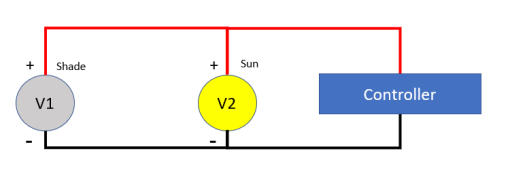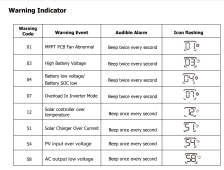So you're saying there's no universe where I could run 32 370w panels in two 4s4p configurations going into the 2 PV inputs of the Growatt 12kw 250? VOC would be around 192 vdc
I can't seem to get the full manual, just data sheet.
That indicates 7000W array and 120A charging current. It lists 250 V max, doesn't give details of watts or amps limit for each of two MPPT tracker.
It is obviously intended to get at least half its charging power from each MPPT, don't know how much more than half.
Don't know if it has a hard limit on Isc, or available watts.
32 x 370W (STC) = 11840W
Obviously it won't process all of that.
If each 16 panel sub array had 4s2p facing SE and 4s2p facing SW, a 90 degree angle, area presented to sun would be sqrt(2) as much.
11840 / sqrt(2) = 8372W (STC)
Typically PTC rating of panels is about 85% to 90% of STC
8372W (STC) x 0.85 = 7116W (PTC)
That's when tilt of panels matches sun; off-season, output is reduced.
Seems to me that having a setup where your 32 panels aren't all facing same orientation, rather have 90 degree angle between them, would be just about fully paneled but not over paneled. No available power wasted, would keep inverter MPPT running at 100% load longer.
But it does carry some risk, depending on how the inverter's MPPT behaves.
If sun is positioned so the two sub arrays are both at 45 degree angle, max output of array, and there are clouds off to the side not blocking direct sun but reflecting light onto it, available current is a bit higher. It is because this extra light can increase output that we are told to design wire/fuses for 25% extra current beyond Isc. If MPPT never allows itself to draw more current than it can handle, no problem. But if it keeps its transistors on longer, pulling array voltage down to maximum power point and taking in more current than MPPT can handle, could cause damage.
Some manufacturers explicitly say extra available watts is OK, but don't exceed voltage spec. They also give a max Isc spec.
You should try to find manual with full specs, because data sheet doesn't list Isc.








